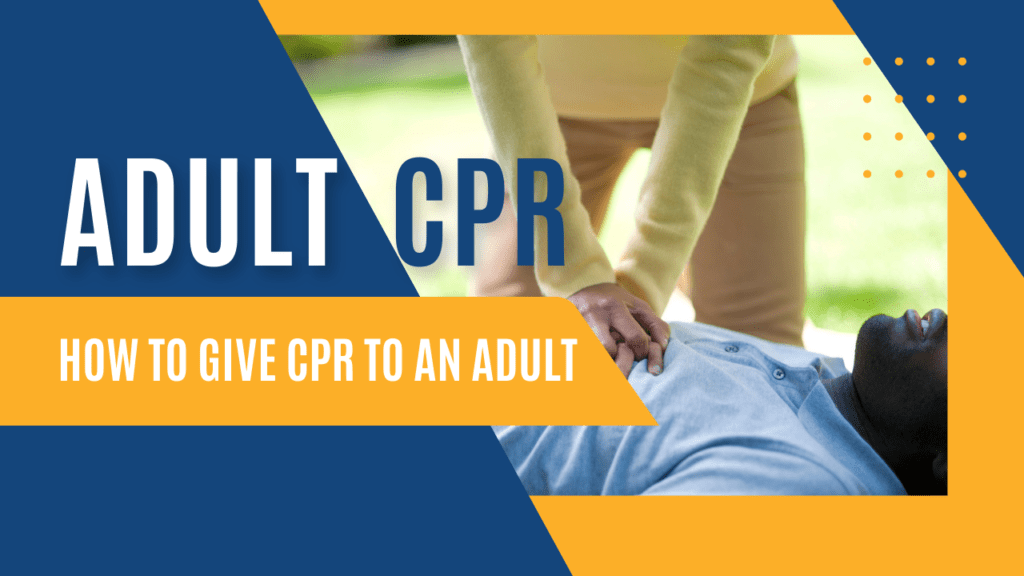Cardiopulmonary Resuscitation (CPR) is a fundamental lifesaving skill that everyone should possess, especially when responding to emergencies involving adults. In critical situations such as sudden cardiac arrest, the immediate initiation of CPR can significantly increase the chances of survival. Understanding the basics of adult CPR empowers individuals to take swift and effective action, turning bystanders into potential heroes.
Contents
Understanding Adult CPR:
Adult CPR is a set of emergency procedures designed to maintain blood circulation and provide oxygen to the vital organs when the heart has stopped beating. Unlike other medical emergencies, cardiac arrest requires immediate attention, and CPR serves as the bridge between the onset of the crisis and the arrival of professional medical help.
The primary components of adult CPR include chest compressions and rescue breaths. The hands-on CPR technique is commonly recommended for untrained individuals, focusing solely on chest compressions. This technique simplifies the process, making it more accessible to the general public and increasing the likelihood of bystander intervention.
The Critical Role of Chest Compressions:
Chest compressions lie at the heart of adult CPR, quite literally. When the heart stops beating, blood circulation ceases, leading to oxygen deprivation in the body’s organs and tissues. Chest compressions act as an external pump, maintaining a minimal blood flow to the brain and other vital organs until professional help arrives.
The American Heart Association (AHA) recommends compressing the chest at least 2 inches deep at 100-120 compressions per minute. This rapid, rhythmic pressure on the chest helps simulate the heart’s pumping action, ensuring a continuous blood flow to prevent irreversible damage.
The Role of Rescue Breaths:
While chest compressions alone can be effective, adding rescue breaths further enhances the oxygen supply to the body. Rescue breaths involve delivering two puffs into the victim’s mouth, ensuring the airway is clear, and the chest rises visibly with each breath. However, it’s essential to note that hands-on CPR is still highly valuable and recommended for those who need more confidence in delivering rescue breaths.
Training for Adult CPR:
Acquiring proficiency in adult CPR is for more than just healthcare professionals. Many organizations and community centers offer CPR training courses for the general public. These courses cover the essential techniques, provide hands-on practice with CPR mannequins, and educate participants about recognizing the signs of cardiac arrest.
CPR certification courses also teach individuals to use automated external defibrillators (AEDs). AEDs are portable devices that can analyze the heart’s rhythm and deliver an electric shock if necessary. When used in conjunction with CPR, AEDs significantly increase the chances of restoring a normal heart rhythm.
The Impact of Bystander Intervention:
Immediate bystander intervention is crucial in the chain of survival during cardiac emergencies. The first few minutes following a cardiac arrest are often the most critical, and bystanders who can initiate CPR promptly can make a life-or-death difference. Waiting for professional help without immediate action dramatically decreases the chances of survival.
In conclusion, adult CPR is a vital skill that transcends professional boundaries. Learning and being prepared to perform CPR can turn any individual into a potential lifesaver. Understanding the basics of chest compressions, rescue breaths, and the use of AEDs can contribute significantly to the chain of survival and improve the outcomes for adults experiencing cardiac emergencies. Whether at home, in the workplace, or within the community, the ability to administer CPR is an invaluable tool that can save lives and impact the well-being of those in need.
For more about Health and fitness, you can visit here.







